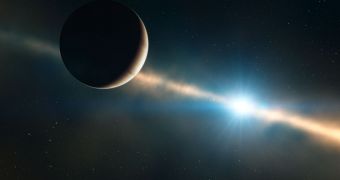Hydrogen-rich atmospheres may be the key to having liquid water on the surface of a rocky exoplanet, even if the body is located up to 15 astronomical units from its parent star. A new study proposes that greenhouse effects can easily warm such a planet up to the point where it becomes habitable.
Having liquid water on the surface of a planet is considered to be essential in order for that body to support life. However, number of rocky exoplanets orbiting their parent star exactly inside their habitable zone is extremely small.
Comparatively, the number of worlds located outside this area is a lot larger. For these cosmic bodies, a hydrogen-rich atmosphere would imply the presence of greenhouse effects, which are known to warm the surface even if the object itself is located about 15 times away from its star as Earth from the Sun.
What the new study determined was that exoplanets whose atmospheres contain a lot of hydrogen would experience global warming effects so powerful that they would remain warm even if located in the outer reaches of their own solar systems.
Astronomers, who are used to calculating a planet's location in respect to its star's habitability zone based on measurements of the former's atmosphere, say that the new data could significantly increase the number of worlds that may be able to support life, Astrobiology Magazine reports, via Space.
“This is the kind of planet we know is habitable,” explains University of Chicago investigators and research team member Raymond Pierrehumbert. He is also the lead author of a new paper detailing the findings, which is published in a recent issue of the esteemed Astrophysical Journal Letters.
But the study proposes that rocky exoplanets can remain habitable up to distances comparable to that of Saturn from the Sun, especially if the objects are located around G-type stars, such as our own.
However, the new proposal does not eliminate a host of issues related to how life may develop. For starters, chemicals released during volcanic eruptions could convert hydrogen to methane, while microorganisms would contribute to throwing the entire system off-balance, too.
Even if that is the case – and numerous worlds fail to achieve balance – it could be that some manage to endure and develop. Their numbers are not (theoretically) low enough to make them a lousy target for astronomical studies, so we may see a few investigations conducted in this direction in the future.

 14 DAY TRIAL //
14 DAY TRIAL //